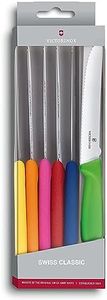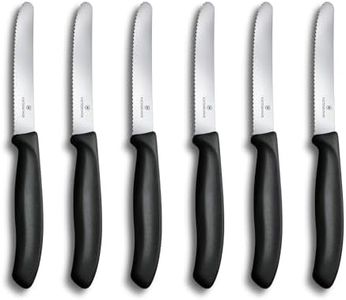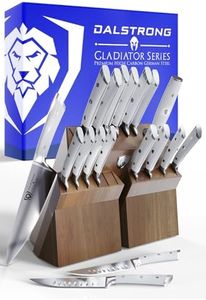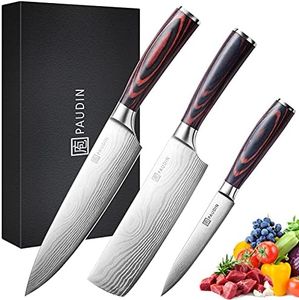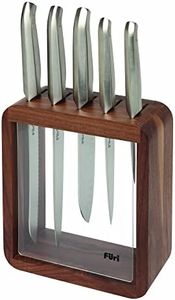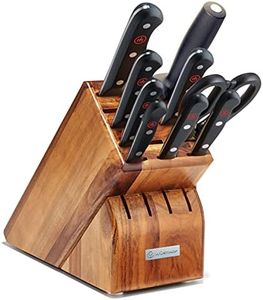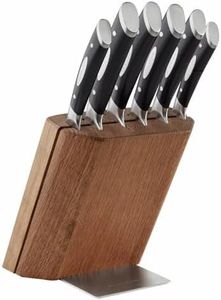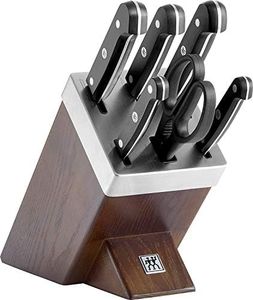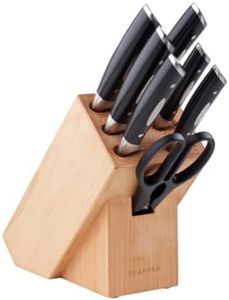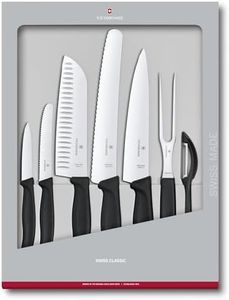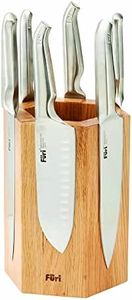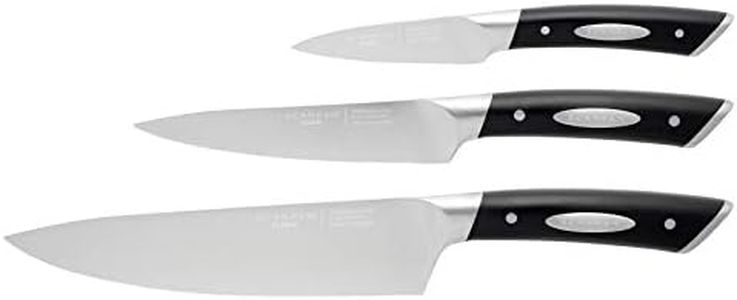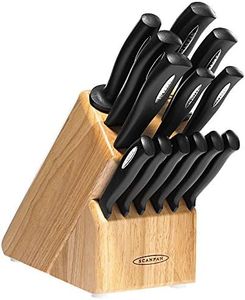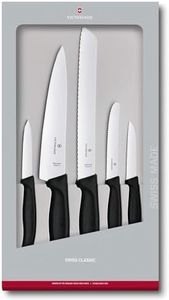We Use CookiesWe use cookies to enhance the security, performance,
functionality and for analytical and promotional activities. By continuing to browse this site you
are agreeing to our privacy policy
10 Best Kitchen Knife Sets
From leading brands and best sellers available on the web.Buying Guide for the Best Kitchen Knife Sets
Choosing the right kitchen knife set can make cooking easier, safer, and more enjoyable. It's important to find a set that matches how you cook, the types of food you prepare, and how much maintenance you're comfortable with. Pay special attention to the details of each knife and how they feel in your hand, as comfort and control are just as important as sharpness. Understanding the main specifications will help you buy a set that fits you best and lasts for years.Blade MaterialBlade material is what the knife is made of, and it greatly affects durability, sharpness, and maintenance needs. Common options are stainless steel, high-carbon steel, and ceramic. Stainless steel resists rust and is easy to care for, which is good for most people. High-carbon steel stays sharper longer but can rust if not dried right away, so it's good for people who are willing to put in extra care. Ceramic blades stay sharp and don't rust but can chip or break if dropped, so they suit those who are careful and want something very low-maintenance. Choose the blade material based on how often you're willing to sharpen and clean your knives.
Number and Types of Knives IncludedKnife sets can range from just a few basic knives to large collections. More knives offer more specific uses, but you might not use them all. Basic sets have essentials like a chef's knife, paring knife, and bread knife, which cover most daily tasks and are a great start for most cooks. Larger sets add specialty knives like carving, utility, and steak knives, which are good for more advanced cooks or those who entertain often. Consider which knives you actually need for your regular cooking to avoid clutter and spend your money wisely.
Handle Comfort and MaterialHandles determine how comfortable and safe your grip is, which matters a lot if you cook often. Handle materials include wood, plastic, and composites. Wood feels natural and looks great but needs to be kept dry. Plastic and composite handles are durable and often more slip-resistant, making them a practical choice. Consider your hand size and whether the shape feels good to hold. Try to pick knives that feel balanced and secure so you avoid hand fatigue and maintain control.
Full Tang vs. Partial Tang ConstructionTang refers to how much the metal of the blade extends into the handle. Full tang knives have metal running through the entire handle, making them stronger and better balanced. Partial tang knives have less metal in the handle and may not withstand heavy use as well. Full tang construction adds durability and is preferable for those who cook a lot or use their knives for tough foods. Partial tang can be lighter and cheaper, working fine for light kitchen tasks.
Storage OptionsKnife sets often come with a storage block, magnetic strip, or protective sheaths. A storage block keeps knives organized and within easy reach, but takes up counter space. Magnetic strips save space and display your knives, but require you to have wall access. Sheaths are for those with limited space or who prefer to keep knives in drawers. Think about your kitchen space and setup to choose the best storage solution for your needs.
Ease of Sharpening and MaintenanceSome knives stay sharp longer but are harder to sharpen, while others need more frequent sharpening but are easier to maintain. Stainless steel knives are generally easier to maintain, while ceramic knives need professional sharpening if they get dull. Some knife sets come with a sharpener or sharpening steel, which is helpful for keeping your blades in top condition. If you want low-maintenance knives, look for those known to keep their edge, but remember that regular upkeep is necessary for any knife.
